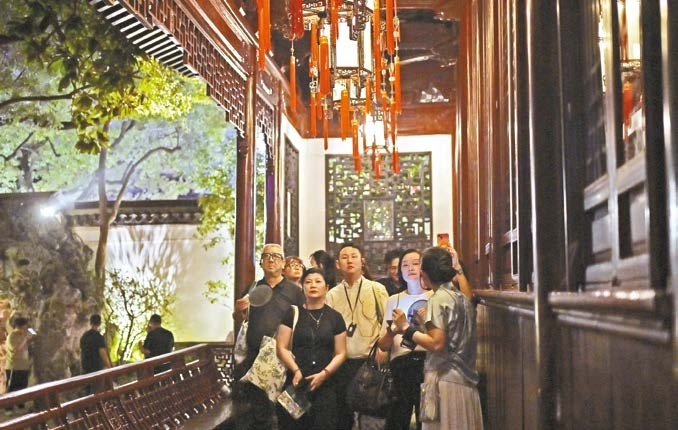
SHANGHAI’S historic Yuyuan Garden has unveiled a regular nighttime immersive experience. For the first time in its 460-year history, the garden is using light, shadow, and digital technology to reimagine its traditional charm under the night sky. Yuyuan Garden was built during the Ming Dynasty (1368-1644) by Pan Yunduan as a retreat for his father, embodying wishes for “peace,” “well-being,” and “bringing joy to the elderly.” The new after-dark program invites visitors to reconnect with nature, poetic beauty, and the serene spirit of classical Chinese garden design. Water serves as the core narrative element throughout the experience. The 350-meter visitor route guides guests through five themed zones and 24 scenic spots, evoking the flow of an ink-wash painting. Key attractions like the Grand Rockery, Wisteria Grove, Wanhua Tower, Jiushi Pavilion, and the Jade Rock become dynamic stages for multimedia storytelling. Interactive installations add a playful dimension. Visitors can touch latticed windows to activate projections of Chinese characters for blessings like fortune and longevity, or step on engraved toad tiles to summon symbols of wealth. These elements merge traditional symbolism with modern engagement. Organizers have designed the experience as a slower, deeper visit: Small guided groups of about 20 people enter at 10‑minute intervals for roughly 50 minutes, led by expert guides who interpret architecture, craft and cultural context. Night tours run May-October (Tues, Wed, Fri-Sun, 6:30-9:50 p.m.) and Nov-April (Fri-Sun, 6-9:20 p.m.), a schedule intended to protect the site and enhance visitor comfort. Yuyuan welcomed more than 2.7 million visitors in 2024, nearly a quarter from overseas. To better serve international guests, the garden teamed with a university translation institute to offer multilingual, culturally interpretive tours that connect Chinese garden aesthetics with Western parallels. Early trial runs returned a 98% satisfaction rate, and planners say the project aims to turn quick daytime stops into longer, more meaningful cultural encounters while balancing preservation and use. (Li Jing) | 
